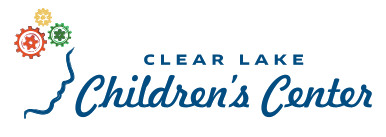Diagnostic Confusion: Autism, PDD-NOS, Asperger’s, or Autism Spectrum Disorder?
So you've finally arrived at a diagnosis after months and possibly even years of searching to find out the reasons for your child's unusual or troubling behavior, communication, and social skills. As if it wasn't hard enough to come to terms with the fact that your child was diagnosed with one of these disorders, now you're hearing that the diagnosis may change again. What does it all mean?
To start, this recent shift in diagnostic labels is related to the newest revision of the manual that clinicians use to guide diagnosis. The Diagnostic and Statistical Manual of Mental Disorders, Fifth Edition (DSM-5) was released in May 2013 following years of research and thorough review of all diagnostic criteria by scores of professionals from the medical, psychological, neurodevelopmental, and related areas of expertise.
A little background: In the previous version of the DSM (i.e., DSM-IV-TR), the umbrella term Pervasive Developmental Disorder had 5 sub-diagnoses: Autistic Disorder, Rett's Disorder, Childhood Disintegrative Disorder, Asperger's Disorder, and the catch-all PDD-NOS (Pervasive Develomental Disorder Not Otherwise Specified). Under the DSM-5, Autistic Disorder, Asperger's Disorder, and PDD-NOS were all collapsed into one single diagnosis, Autism Spectrum Disorder (ASD). The rationale for this change was based on the continuum of symptoms across all of these conditions, making it clear that rather than separate and unique diagnoses, they were more accurately described as falling within one spectrum with varying degrees of the same symptomatology. The professional community essentially decided that differential diagnosis within the spectrum was less important than simply identifying that an individual is on the spectrum, given that the treatment recommendations remained the same. Also notable, rather than separating out social skills and communication symptoms along different criteria, a single construct combining these (i.e., social communication), was determined to be more appropriate.
Of course, this shift in diagnostic terminology was not without controversy. There were many questions about whether children previously diagnosed with PDD-NOS or Asperger's Disorder would continue to meet criteria for autism spectrum disorder under the new DSM-5 criteria. There were concerns that children receiving services would be re-categorized and thus be dropped from eligibility for those services. This has not happened. There are also plenty of people out there who refuse to give up their Asperger's label, preferring it to ASD as it seems to connote a higher and more desirable level of functioning. The bottom line is, regardless what you call it, there are many tried-and-true and empirically-supported interventions for individuals on the spectrum. Let's call it what it is and move on!
For all of the visual learners out there:
| Old Diagnosis | Current Diagnosis |
| Asperger's Disorder | Autism Spectrum Disorder (ASD) |
| Autistic Disorder | Autism Spectrum Disorder (ASD) |
| PDD-NOS | Autism Spectrum Disorder (ASD) |
Parents, if you find helpful resources out there that have Asperger's in the title - go for it! If you see an older article discussing autism, but your child was diagnosed with PDD-NOS, don't let the label hold you back. Just please don't be offended when the next professional you work with refers to your child as having ASD as opposed to PDD-NOS or Asperger's.
By the way, in the public schools, the eligibility category for all of these (i.e., PDD-NOS, Asperger's, Autism, ASD) has always been AU and has not changed.
